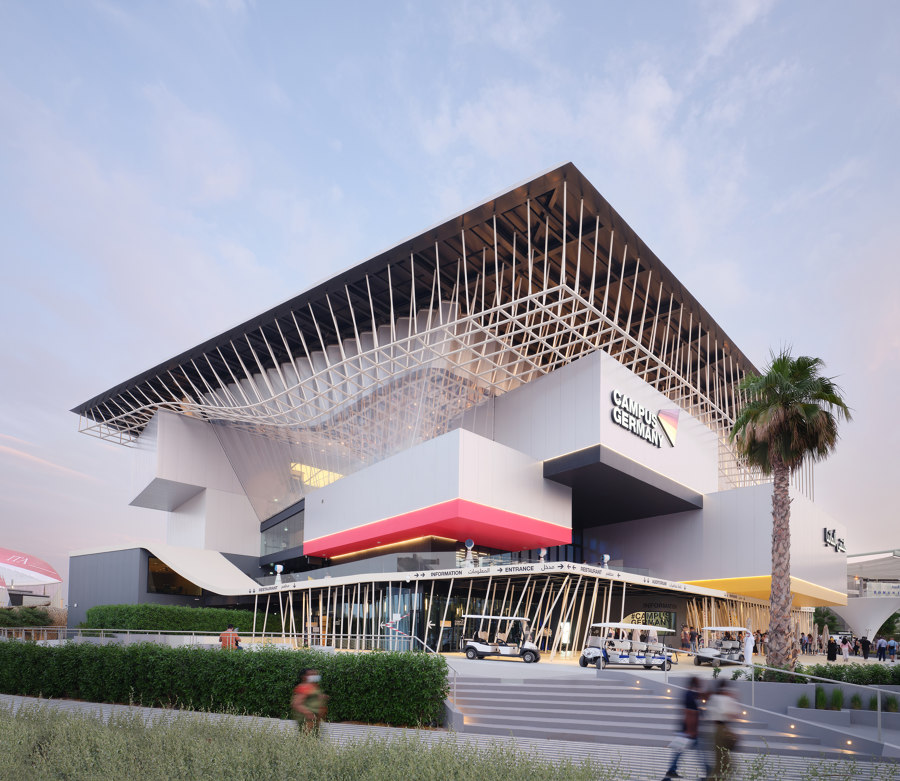
Fotograf: Taufik Kenan
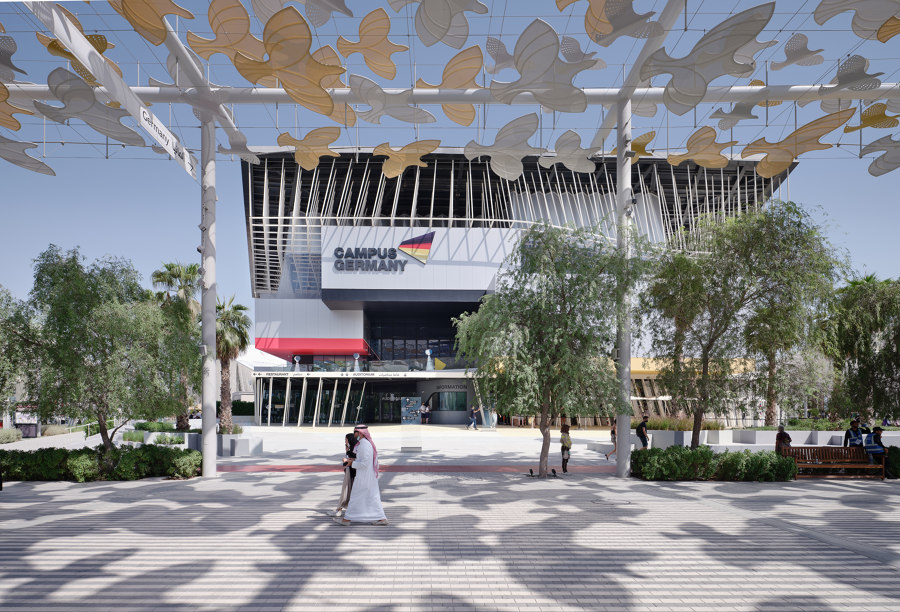
Fotograf: Taufik Kenan
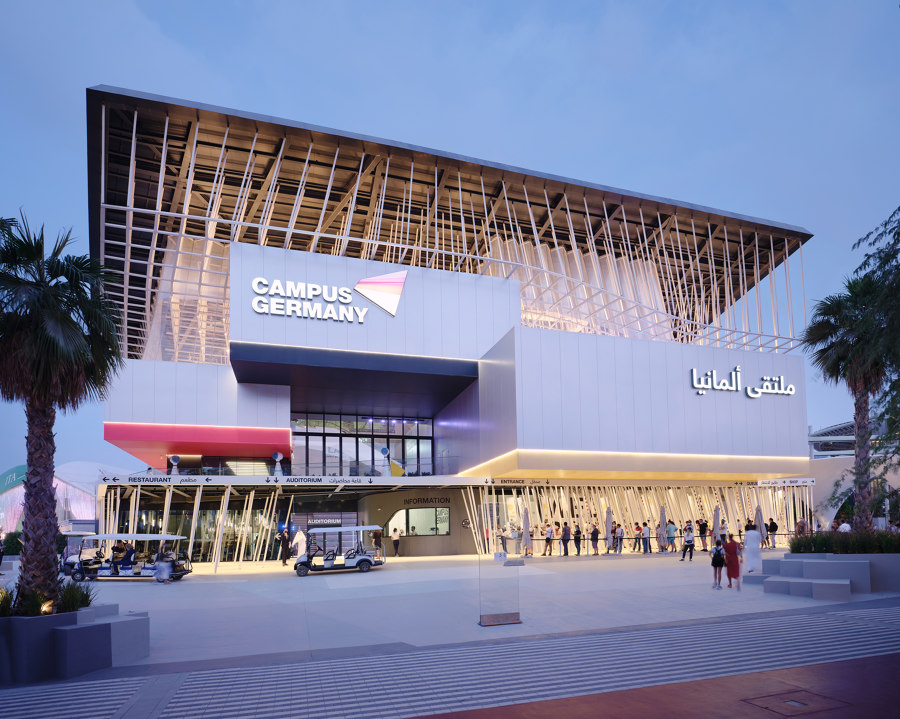
Fotograf: Taufik Kenan
German Pavilion Expo 2020 design embodies message of sustainability
LAVA’s design of the German Pavilion at Expo 2020 Dubai is an ensemble of suspended cubes, a forest of steel poles, covered by a floating roof. And behind these visually exciting design elements everything from intelligent use of local climatic conditions to materials reuse to connectedness is sustainable.
"The key question was how to design a temporary exhibition and event space for up to three million visitors in a desert environment that was sustainable. LAVA’s solution linked the Expo theme of connectedness, with our approach of ‘more with less’, with humans interacting with nature and technology at its heart,” said Tobias Wallisser, director of LAVA.
1. BUILDING AS EXHIBIT: SOCIAL SUSTAINABILITY
“The building design is part of the exhibition, a tool to connect people.” “We wanted to address the Expo motto 'Connecting Minds, Creating the Future’ and so we chose to represent Germany as a ‘campus’, an open place for exchange of knowledge, ideas and innovations. Rather than placing the buildings horizontally across a site, three suspended cubes are assembled vertically. This loose, porous stacking of volumes, an ensemble rather than a single form, suggests interconnectedness,” said Christian Tschersich, project director, LAVA.
The positioning of the cantilevered cubes generates a spacious central atrium for gathering and events. At the heart of the visitor experience this covered vertical space visually connects all functional areas with one another, helps with way-finding, creates diverse visual relationships and access points, and assists with management of large visitor numbers.
The visitor route brings people continuously onto terraces (on top of the cubed spaces). They see their past and future trajectory, engage with other people, and enjoy vistas out to the Expo site. The exhibition spaces, designed by facts and fiction, (Energy Lab, Future City Lab, and Biodiversity Lab) feature individual immersive experiences inside the cubes, whilst terrace exhibitions invite group interaction.
Rather than a traditional exhibition hall the campus metaphor sees the whole building as an exhibit, not merely a canvas to display, but a tool for connecting people and content, and a place to experience German innovations.
2. BUILDING AS EXHIBIT: STRUCTURAL SUSTAINABILITY
The actual structure is the message.
“We incorporated the principle of sustainability right from the start by using the minimum amount of material to create maximum volume. LAVA’s ‘more with less’,” said Tschersich.
Three cubes were stacked on top of a plinth with other functions (restaurant, pre-show, office, back-of-house) formed as an abstract landscape. This created a large volume at the centre, and a roof creates shade and comfort – a technical cloud. A sandwich of three parts: landscape – stacked cubes – roof. People between nature and technology.
The clever positioning of the stacked cubes is driven by local climate and features passive energy-saving features that reduce the impact of direct sunlight, generate natural shade, decrease the heat load and optimise the indoor climate. This intelligent creation of shade by the building elements also makes “hybrid” air conditioning possible. It also references the design of the local courtyard house, with closed exterior facades and rooms oriented towards an inner airspace that open up to each other.
A hybrid facade minimises the sense of building bulk and creates an iconic framing of the space. At the upper level a dynamic arrangement of 900 vertical steel poles, a forest of trees
swaying in the wind, creates movement. With gradually changing angles they frame the central atrium space and modulate light.
An opaque, trapezoidal single-layer ETFE membrane can be opened and closed, responsive to different weather conditions during the six-month Expo period, such as sandstorms and cooler days, and minimises the need for air conditioning. The pavilion’s outer shell also includes 1.5 metres-wide glass elements that can be rotated and opened, allowing the building to breathe.
The visually striking technical cloud roof creates shade and comfort. It allows daylight into the interior through multiple small openings, similar to sunlight penetrating a forest canopy, creating an ever-changing visitor experience. Mirror surfaces reflect direct sunlight against the roof skin, a dynamic interplay of light. At night, a field of LED lights integrated in the ceiling make the building radiate from within.
Resource consumption and the circular economy were also major design drivers and are reflected in numerous passive and active sustainability features - from Design for Disassembly (DfD) to “Mine the Scrap”, “grey energy”, sustainable and reusable building materials. 95% of the building will be repurposed after the Expo is finished, with standardised building elements such as steel poles dismantled and reconfigured into different geometries.
LAVA’s bottom-up approach focussed on visitor comfort, technology in the service of humans. “At LAVA we’re always looking at the interaction between people and the physical environment they inhabit. Sustainability requires that environments are adaptable and changeable,” added Wallisser.
The transition from hot exterior to inside was carefully considered. To reduce temperature shock and save on energy costs the architects designed a transitional space where visitors entering the building, with lengthy queues, are cooled by a gentle water mist emanating from steel poles allowing them to gradually acclimatise. The central atrium is cooled by cold air expelled from the air-conditioned exhibition spaces, thereby reducing energy usage and improving visitor comfort.
“An efficiently stacked volume of space, responding to the local environment with an intelligent climate management system. This project shows how buildings can be optimised, made intelligent, be reconfigured, can adapt to changing users, environments, temperatures, acoustics, and light,” said Alexander Rieck, director, LAVA.
Chris Bosse LAVA Director added: “Functional requirements, visitor experience, climate and environmental concerns are all resolved thorough this clever multi-performative design.”
Added Wallisser: “Architecture isn’t purely a façade. Of course we wanted the building to be Instagrammable! But also innovative, thought-provoking, with an effective experiential quality. The hardware of the building creates a journey for visitors from around the world.”
The concept continues pavilion design innovations, from London’s Crystal Palace to Mies van der Rohe’s German Pavilion at Expo ’29 in Barcelona and Frei Otto at Montreal’s Expo ’67.
The German Pavilion also houses a three-level restaurant, VIP spaces for business meetings, work spaces for staff. It is located in the sustainability section, close to Al Wasl Plaza, which forms the heart of the Expo site. Expo 2020 Dubai 1 October 2021 to 31 March 2022 is divided into three districts: sustainability, mobility and opportunity, with exhibitions from over 190 countries.
The Federal Ministry for Economic Affairs and Energy commissioned Koelnmesse GmbH to organise and run the German Pavilion. The “German Pavilion Expo 2020 Dubai Consortium”, comprising facts and fiction GmbH and NUSSLI Adunic AG, is in charge of concept design, planning and realisation. facts and fiction is responsible for content, exhibition and media design, and the pavilion was built by NUSSLI Adunic, with architecture and spatial design by LAVA.
EXHIBITION
TEXT FROM FACTS & FICTION
Focussed on the topic of sustainability, interactive exhibits in the thematic areas of energy, the city of the future and biodiversity showcase sustainable innovations “Made in Germany”. The pavilion is a place of knowledge, research and exchange in accordance with the motto of Expo 2020 Dubai: “Connecting Minds, Creating the Future”. Visitors are taken on an interactive journey from “enrolment” in the pavilion to the “graduation ceremony” at the end of the tour. They actively participate and experience being part of a community that is committed to a more sustainable future.
The visitor starts the experience even before they enter the pavilion. Here, the federal states are presented in the form of audio stations, virtual reality applications, interactive tables and films. Next, pavilion staff “enrol” visitors and provide them with their own name tag.
Integrated into the name tag is the innovative IAMU system: The Realtime Locating System (RTLS) turns CAMPUS GERMANY into an intelligent, interactive exhibition space. Among others, IAMU automatically starts media content in the language of the respective guest. In addition, visitors are invited at several points to contribute their opinion by voting.
After an introduction event, a ball pool follows. Each of the 100,000 balls contains a fact about sustainability in and from Germany. The Energy Lab, the Future City Lab and the Biodiversity Lab, represent the actual “curriculum” of the Campus and feature more than 50 interactive exhibits. They each showcase an innovative and sustainable idea from Germany, the implementation of which is brought closer to the visitors in a playful way. Each of the labs also has its own design idea. Closed, immersive spaces characterised by a high degree of diversity, alternate with open terraces that offer a view across the atrium.
Finally, in the “Graduation Hall”, visitors experience a surprising and emotional performance in which the combination of technology, community and the idea of sustainability reaches its climax. Visitors take their seats on swings in an impressive show and start moving together for a more sustainable future.
Design team:
Lava Architects
Lava Practice Credits: Tobias Wallisser, Alexander Rieck, Chris Bosse with Christian Tschersich
Project Team: Maria Pachi, Ahmed Rihan, Niklas Knap, Daniele Colombati, Wassef Dabboussi
Competition team: Maria Pachi, Christina Ciardullo, Courtney Jones, Jed Finanne, Benjamin Riess, Joanna Rzewuska
Drawings: Johannes Bitterer
Concept design, planning and implementation: facts and fiction/NUSSLI
Structural engineers: schlaich bergermann partner
Climate: Transsolar
Reuse: Certain Measures
MEP: energytec
Fire: Steinlehner
Light: Kardorff Ingenieure
Drawings: © facts and fiction | NUSSLI Adunic| LAVA

Fotograf: ️Roland Halbe
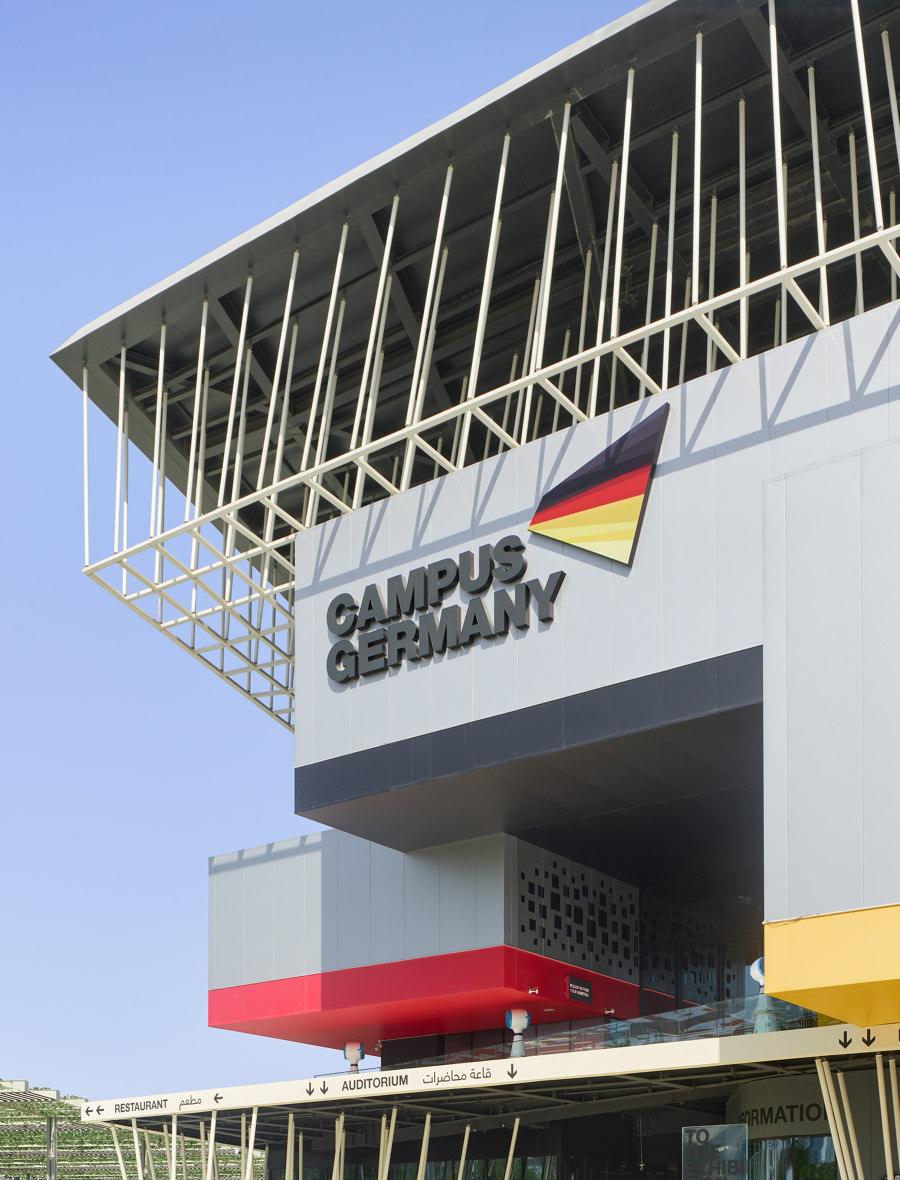
Fotograf: ️Roland Halbe
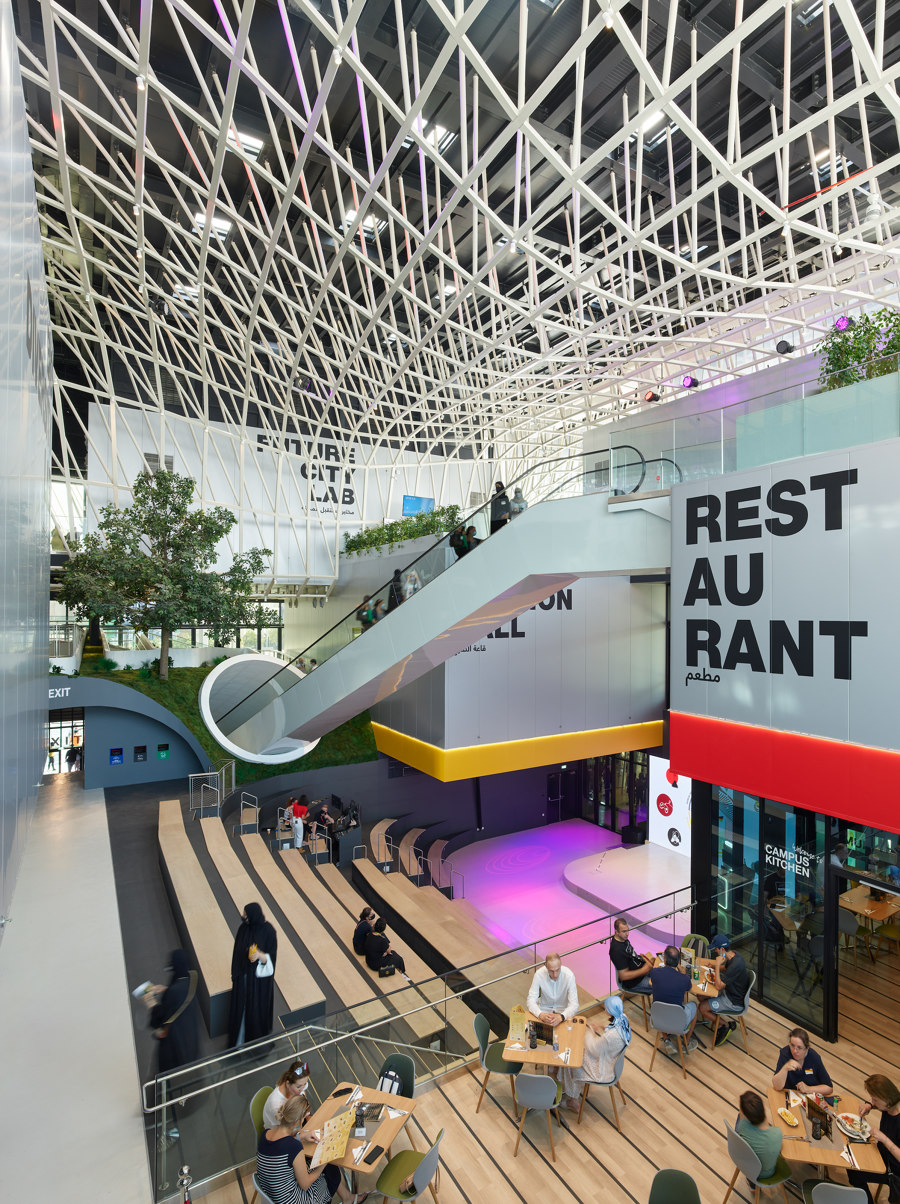
Fotograf: Roland Halbe

Fotograf: ️Taufik Kenan
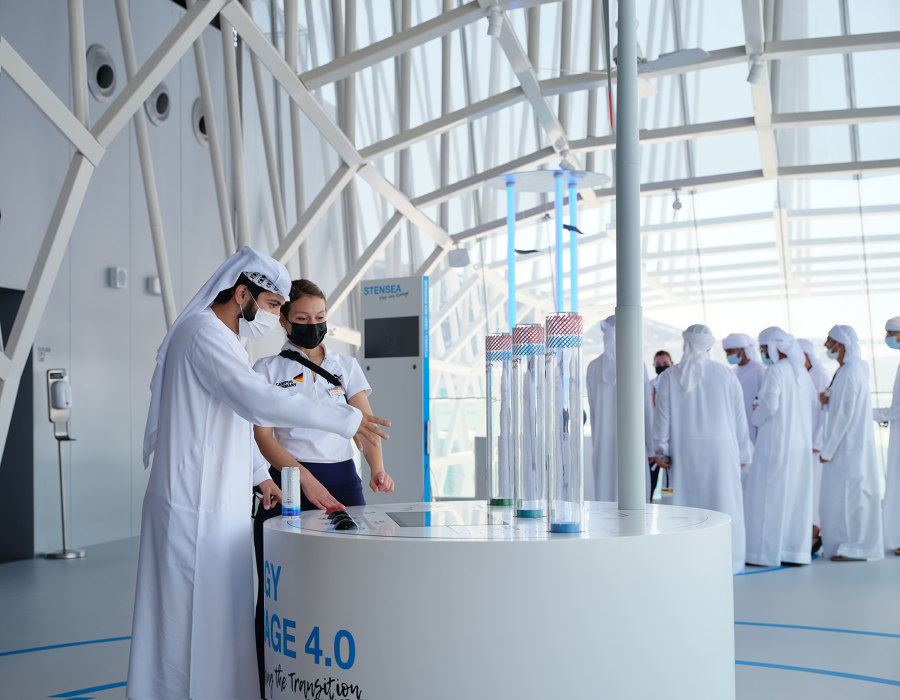
Fotograf: Taufik Kenan
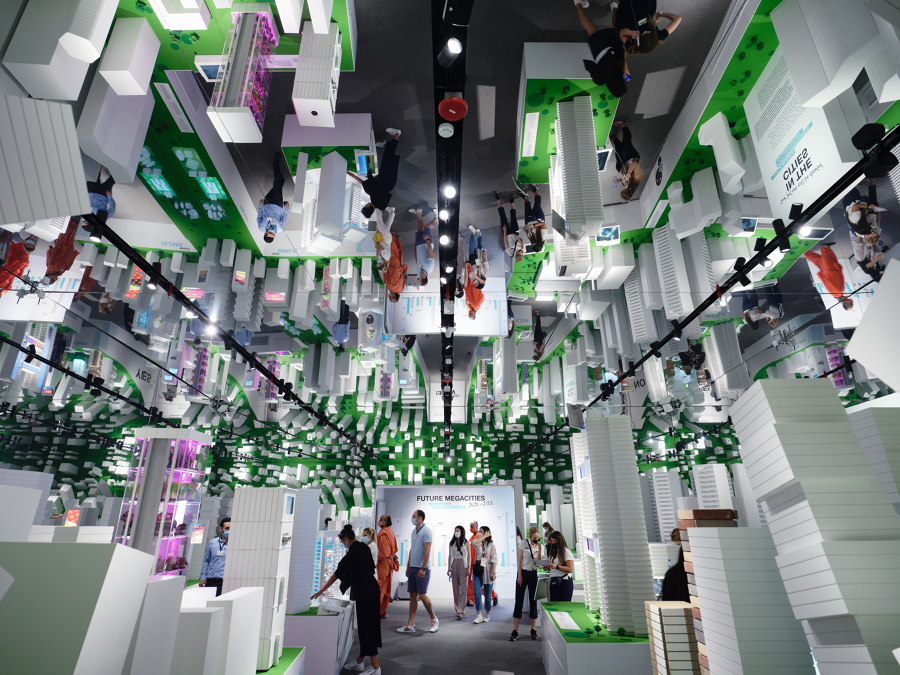
Fotograf: Taufik Kenan
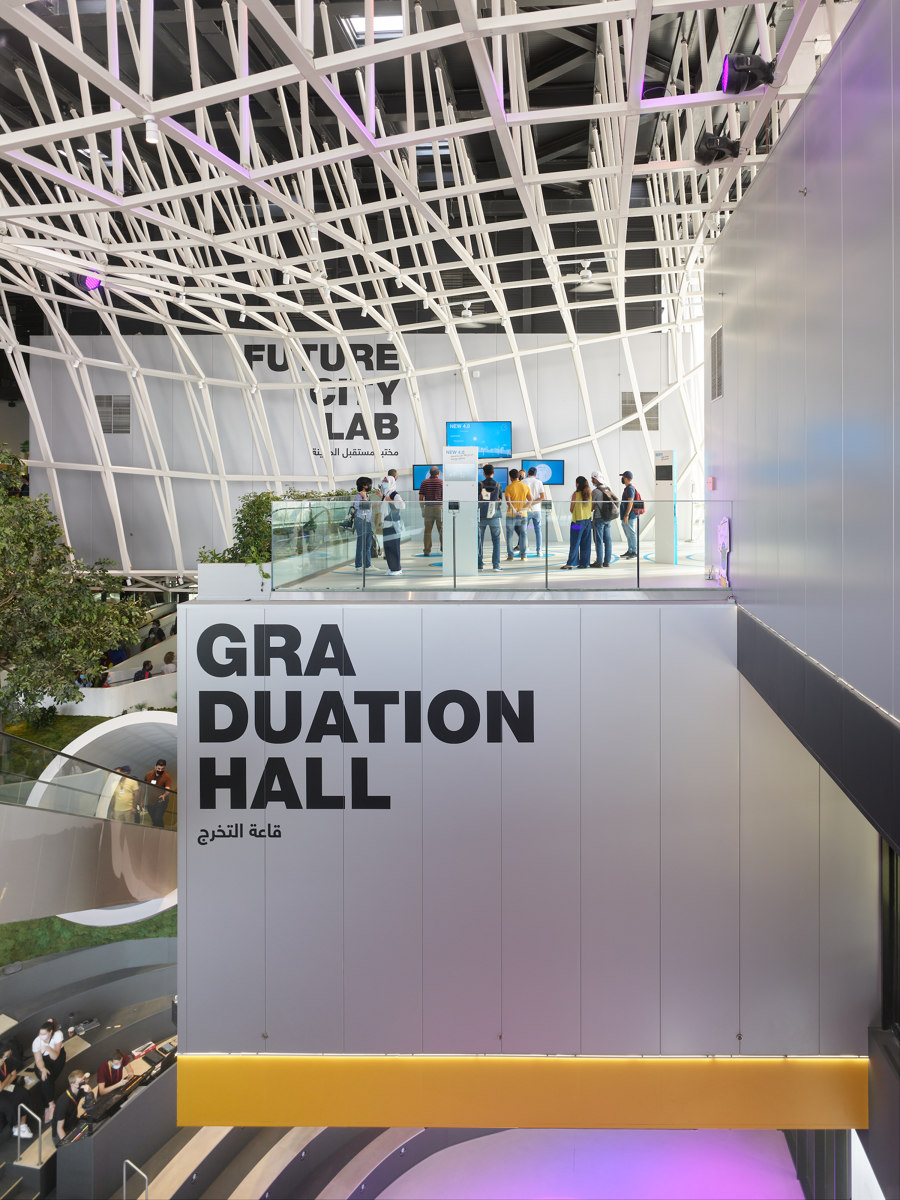
Fotograf: Roland Halbe
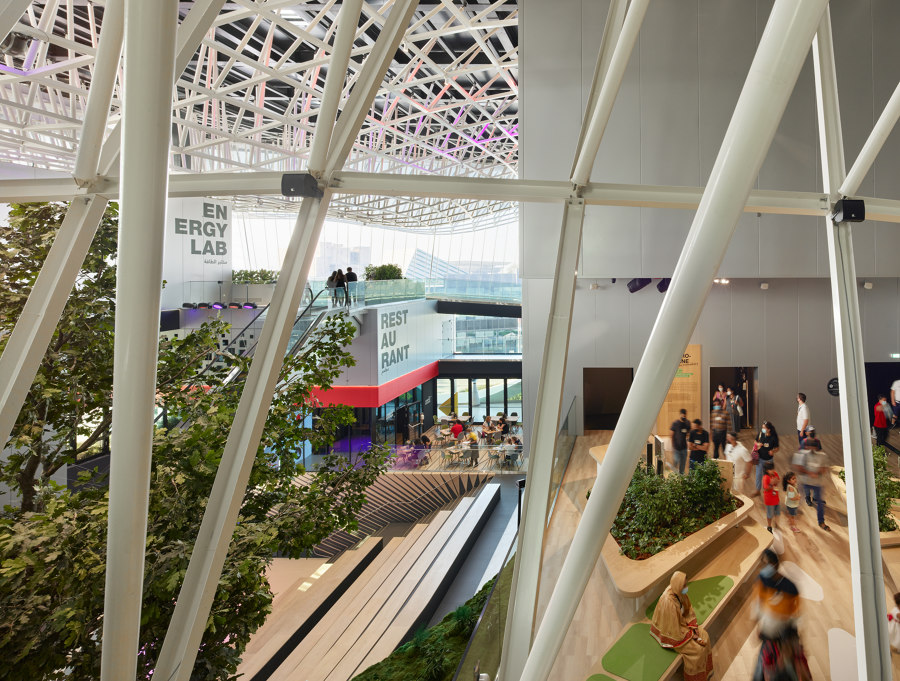
Fotograf: Roland Halbe
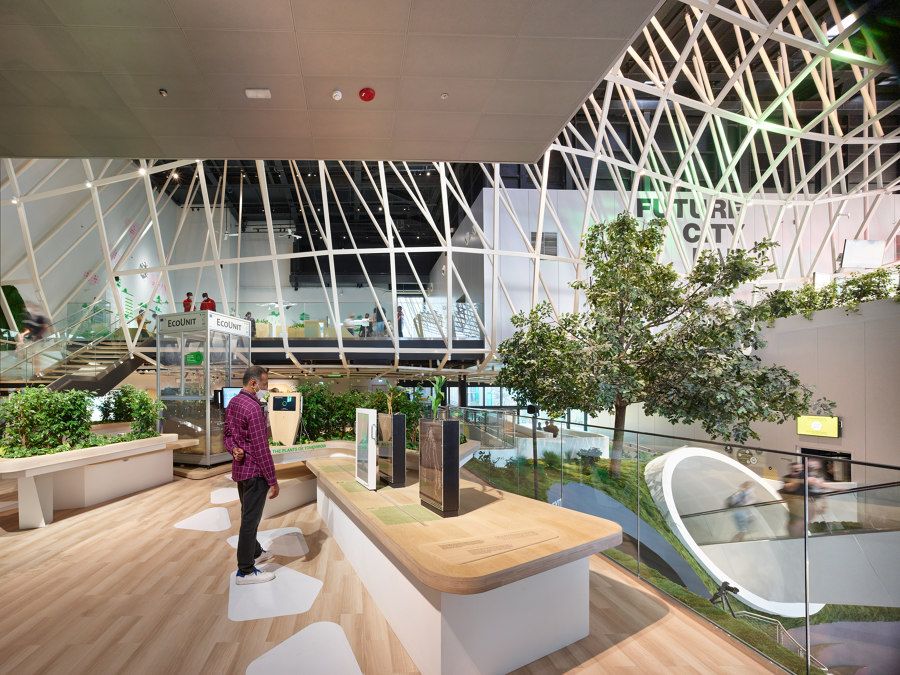
Fotograf: Roland Halbe
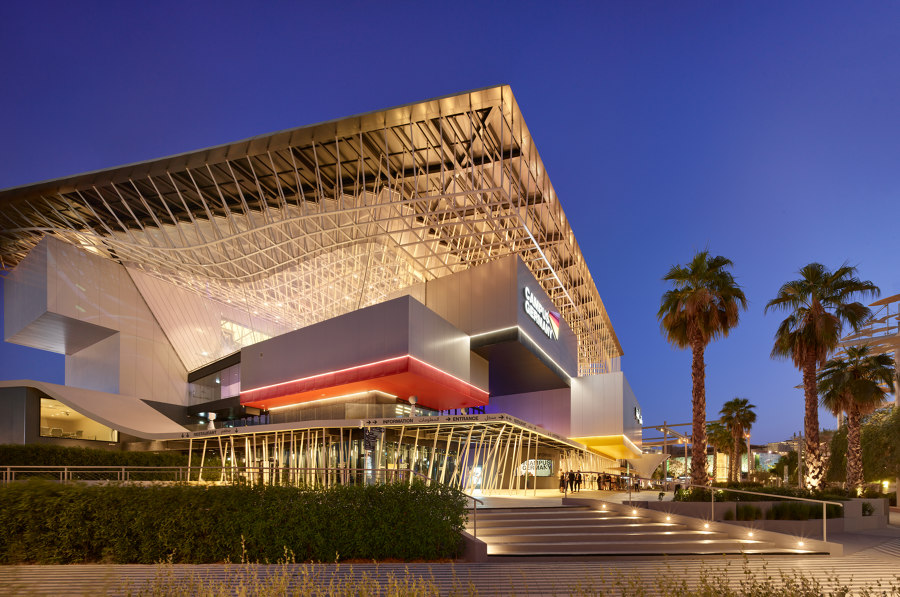
Fotograf: Roland Halbe




















